June 8, 2020
DePaul University School for New Learning Graduate Programs
1 E. Jackson (mailing); 14 E. Jackson (office location), Chicago, IL 60604 snlgrad@depaul.edu
| Master of Arts Program in Applied Professional Studies (MAAPS) | |
|---|---|
GRADUATE FOCUS AREALEARNING PLANforBrett Neese [Cluster #103] • ADDRESS: 2710 E. 53rd Street Apt 5, Davenport, Iowa, 52807 • PHONE:+1-563-210-3459 • EMAIL: brett@neese.rocks DOCUMENT DATE: June 06, 2020 |
|
| Focus Area Title | Exploring global social and political systems through cybernetic philosophy |
| Prof. Advisor | Dr. H. Peter Steeves
|
| Faculty Mentor | Dr. Arieahn Matamonasa
|
| Academic Committee Endorsement |
|
|---|---|
NOTE: The Academic Committee’s dated endorsements (above)are required prior to the plan being reviewed by GSPRC. |
|
| GSPRC Approval |
|
PART I: Area of Focus for Graduate Study
Focus Area TITLE:
Exploring global social and political systems through cybernetic philosophy
Focus Area EXPLANATION:
Vantage Point #1: Defined Parts
My focus will be understanding how a cybernetic approach can be used to understand and create more equitable social systems, and I will apply these ideas through the creation of performative new media art, which, as I’ll explore later, is the work of “doing cybernetics,” — both making the discipline more approachable to the layperson while also creating a particular kind of different way to think about the world. In particular, I will maintain special attention to the relationship cybernetics has to ideas about queerness and borders — political, social, and physical.
Cybernetics, fundamentally, is the study of how humans and machines relate to, communicate with, and control one another. It’s the “primordial soup” that spawned such disciplines as computer science, systems theory, game theory, etc. In recent years it has also been expanded to mean “the science of context,” which “provides perspectives on the role of making things simple, narratives, and reflexivity which combine to assist in whatever steering may be required — be it for a given moment or for the long term” (Key Concept - American Society for Cybernetics, n.d.).
But, as described by Andrew Pickering in The Cybernetic Brain: Sketches of Another Future there’s another interpretation of cybernetics that I’d like to spend the majority of my academic endeavors focusing on — the definition that emerges out of British cybernetics, which focuses on the “adaptive brain,” and creating representations of that brain. To be clear: this is not merely to emulate the human brain. It is not to understand machines as artificial brains. Instead, as Walter Ashby (as cited by Pickering, 2010, p. 6) describes, it is to understand the brain as an acting machine:
To some, the critical test of whether a machine is or is not a ‘brain’ would be whether it can or cannot ‘think.’ But to the biologist the brain is not a thinking machine. It is an acting machine; it gets information and then it does something about it.
As Pickering notes, “the cybernetic brain was not representational but performative... and its role in performance was adaptation” (2010, p. 6).
Although rarer than traditional objects of engineering, cybernetic systems and ideas surround the contemporary Western human. The classic example of a cybernetic system is a thermostat — which reacts to its environment through a feedback loop, adjusting the temperature in the room to a desired temperature. But many other systems, including, for instance, the human body, can be understood through a cybernetic lens, giving us many new insights into ourselves, machines, and other selves. Pickering notes that cybernetics is less of a distinct academic discipline as it is “a form of life, a way of going on in the world, even an attitude” (2010, p. 9).
Because of the importance of performance in doing cybernetics, my goal in this graduate program will be to take cybernetic ideas and apply them to global social systems through the creation of new media. How have global social systems, such as the nation-state, evolved in reaction to the development of information technology? And how will changes in communication technology alter our current political structures? How can we build a more equitable future using ideas from cybernetics? These are just some the questions cybernetics can help us answer.
It’s also important to note that global here means more than just “worldwide.” It means a rejection of the modularity prevalent in modern modes of thought. In particular, cybernetics can help explore ideas about boundaries and categories, much as Donna Haraway undertook in her seminal piece “A Cyborg Manifesto” and artists like Zach Blas undertook in his art exhibition “Queer Technologies.” These ideas inform all manners of contemporary thinking of selves, gender, society, etc. And because the nation-state itself is a cybernetic system, we can also use cybernetics to create political myths around what we expect to happen in a post-border future.
I intend to apply, or transform, the research I will do into cybernetics into the physical realm through the creation of cybernetic art. Cybernetics is a practice and
theory is not enough. One cannot deduce the homeostat, or Laing’s psychiatry, or Pask’s Musicolour machine from the cybernetic ontology or the mangle. The specific projects are not somehow already present in the ontological vision. In each instance creative work is needed; something has to be added to the ontological vision to specify it and pin it down. That is why we need to be interested in particular manifestations of cybernetics as well as ontological imaginings. That is how, from my point of view, cybernetics carries us beyond the mangle. (Pickering, 2010, p. 24)
I hope to carry on the cybernetic tradition outlined by Pickering, creating “strange machines and artifacts, material and social” (Pickering, 2010, p. 4) My work will partially be the work of “exposing, playing with, and reconfiguring digital technologies to make them align more with our politics and desires” (Blas & Cárdenas, 2013, sec. 9). More importantly, however, the goal of these projects will be to recast “science as a mode of performative engagement with the world” (Pickering, 2010, p. 19). To do this, of course, requires performance itself. Early cyberneticians “[built] electromechanical devices that were themselves adaptive and which could thus be understood as perspicuous and suggestive modes for understanding the brain itself” (Pickering, 2010, p. 6). I am less interested in the brain and more interested in social and political systems. But much like these earlier cyberneticians, I intend to take the idea of cybernetics as a performative practice extremely seriously and create my own “artifacts.”
Vantage Point #2: Key Information Sources
As Pickering notes, the strand of cybernetics that will be my subject of inquiry has been “largely forgotten” (2010, p. 3). In addition, the anti-disciplinary nature of cybernetics created tenuous relationships between formal institutions that were increasingly modularizing, and forced much of the work out of the academy into informal, “almost hobbyist” (Pickering, 2010, p. 10) circles.
In spite of this — or perhaps, because of this — there is a wealth of material, largely historical, but some contemporary. In particular, there is a very small group of contemporary thinkers attempting to revive cybernetic thinking, which presents a unique opportunity for me to help redevelop the field as part of my graduate education.
Key Historical Figures
Stafford Beer
Grey Walter
R.D. Laing
Gregory Bateson
Ross Ashby
Gordon Pask
Norbert Wiener
Alan Turing
John von Neumann
Key Contemporary Figures
Andrew Pickering
Donna Haraway
Micha Cárdenas
Charles Eppley
Zach Blas
Conferences
There are a few academic and professional conferences that discuss cybernetic thought:
Metaphorum is dedicated to the legacy of Stafford Beer
World Organization of Systems and Cybernetics Congress
Conference of the American Society for Cybernetics
The Cybernetics Conference
Historically, the Macy Conferences focused on developing cybernetic ideas
Formal Organziations
As mentioned before, cybernetics largely existed and exists in the realm of informal organizations. However, there are a couple of formal academic/professional organizations dedicated to the field:
Key Texts
Collected works of Stafford Beer
Norbert Wiener’s Cybernetics
The Cybernetic Brain: Sketches of Another Future by Andrew Pickering
Journals
Few active journals are dedicated solely to cybernetics. However, there are many that are adjacent to the field, including
Other Resources
Cybernetics and trans identities
A class at the University of Chicago which gives an example of the kind of work that can be done, particularly relating cybernetics to queer studies
General Intellect Unit Podcast + Community
The podcast of the cybernetic Marxists
The Cybernetics Library in NYC
Catalogue: https://www.librarything.com/catalog/cyberneticslibrary
Imaginary computational systems: queer technologies and transreal aesthetics
Not explicitly about cybernetics, but a great example of the kind of work I’d like to do, and why
The GIU Library
An invite-only electronic library with a massive number of texts, papers, and other resources
Vantage Point #3: Key History/Foundations
Historically, there have been three main strands of cybernetics: US, British, and Soviet. My focus will be on the British branch, but I think it’s important to do a general outline of each of strand to get an understanding of the history and relationships between each branch. There is also an interesting relationship the development between the development of cybernetics and Mexico — while not another “branch” as that work got folded into US cybernetics, I intend to explore that history in my program as well.
US Cybernetics
Cybernetics in the United States evolved out of US military research in WWII. “Cybernetics” was coined by Norbert Wiener, who was working with the US military to develop autonomous anti-aircraft guns. Often, it is this history that is most intimately associated with cybernetics, which gives it a bit of a “bad rap” in some circles, and the reason it is “often thought of as a militaristic science” (Pickering, 2010, p. 14). This view is not completely wrong. However, Pickering also notes a few rebuttals to this argument:
But first, I think the doctrine of original sin is a mistake—sciences are not tainted forever by the moral circumstances of their birth—and second, I have already noted that Ashby and Walter’s cybernetics grew largely from a different matrix, psychiatry. (2010, p. 14)
It’s also interesting to note that after his wartime work — or perhaps, because of it:
Wiener would go on to be radicalized by the Cold War and the arms race, not only declaring that scientists had a responsibility to refuse to participate in military research, but asserting the need for a socialist interpretation of cybernetics. (Phillips & Rozworski, 2019, p. 218)
This socialist interpretation, alongside Wiener’s original work, deserves more investigation throughout this post-graduate program, and I will return to outline a more detailed historical outline of US cybernetics once that work is complete. In addition, this section deserves much more attention paid to computer science pioneers like John von Neumann and cultural anthropologists, such as Margaret Mead, who were active in or adjacent to the cybernetics movement happening at the time.
British Cybernetics
Perhaps the most interesting strand of cybernetics arose in Britain, from researchers interested in the human brain. Rather than the military applications of adaptable systems researched by US researchers like Wiener, British cyberneticians such as Walter Ashby, Grey Walter, and Warren McCulloch “spent much or all of their professional careers in research on the human brain, often in psychiatric milieus” (Pickering, 2010, p. 5). For these researchers, “the distinctive object of… cybernetics was the brain” (Pickering, 2010, p. 5).
According to Pickering, “there are two ways to think about the brain and what it does: as a organ of knowledge and representation,” or, through the approach taken by British cyberneticians, who “conceived of the brain as an immediately embodied organ, intrinsically tied into bodily performances… and beyond that, they understood the brain’s special role to be that of adaptation” (2010, p. 5). For them, “the cybernetic brain was not representational but performative… and its role in performance was adaptation” (Pickering, 2010, p. 5).
Because of their focus on performance, these cyberneticians “[built] electromechanical devices that were themselves adaptive and which could thus be understood as perspicuous and suggestive models for understanding the brain itself” (Pickering, 2010, p. 5). As Pickering points out, this is in contrast to most examples of objects from engineering that are woefully unaware of their environment; a bridge doesn’t respond to the traffic on it. It just sits there, an immovable hunk of concrete — and this is especially true of objects of engineering prior to the cybernetic era (it’s probably not coincidental that the environmental movement of the 1970′s, with its passively cooled homes, happened when cybernetics was still in its heyday.) However, “cybernetic devices, in contrast, explicitly aimed to be sensitive and responsive to changes in the world around them, and this endowed them with a disconcerting, quasi-magical, disturbingly lifelike quality” (Pickering, 2010, p. 7).
It’s crucial to note here “that neither Walter nor Ashby claimed actually to have modeled anything approaching the real human brain” (Pickering, 2010, p. 14). Instead, they were emulating the performative, “black box” aspects of the brain, to create a world where the performance was the object of consideration for science. Doing that kind of work creates what Pickering describes as “ontological theatre” (2010, p. 21); it is an ontology that is distinctly “nonmodern,” because it rejects modernism’s dualist contrast between the object and the subject/self. British cybernetics is a new way to do science, which solves many of the tricky problems faced by doing a modern science (or a post-modern science.) Cybernetics creates “a nonmodern ontology… that goes with a performative understanding of the brain, mind, and self” (Pickering, 2010, p. 7).
Because of that “cybernetics is better seen as a form of life, a way of going on in the world, even an attitude, that can be, and was, instantiated both within and beyond academic departments, mental institutions, businesses, political organizations, churches, con cert halls, theaters, and art museums” (Pickering, 2010, p. 9). This means that (British) cybernetics has a very broad surface area:
Cybernetic practices and artifacts first emerged as brain science and psychiatry, but quickly and distinctively spread to all the fields I have just mentioned (and more): robotics, engineering, a science of general systems with applications in many fields, biological computing, management, politics, spirituality (if that is a field), entertainment, the arts, theater and architecture (music, too), education. (Pickering, 2010, p. 9)
However, partially because of its wide, anti-disciplinary appeal, it often never found a “home” anywhere. It was rather instable, occurring mostly in informal circles and had “a very chancy mode of transmission and elaboration” (Pickering, 2010, p. 10). Cybernetic texts like Grey Walter’s The Living Brain “had an active readership diverse enough to span protoroboticists and the Beat writers and artists” (Pickering, 2010, p. 11).
Brian Eno discovered Stafford Beer’s “Brain of the Firm,” early in his career and it forever altered his approach to making music. According to Pickering:
Cybernetics was thus a strange field sociologically as well as substantively. We might think of the cyberneticians as nomads, and of cybernetics as a nomad science, perpetually wandering and never finding a stable home. (2010, p. 11)
Soviet Cybernetics
One place where it did find a formal institutional home, however, was in the Soviet Union. Pickering notes that a discussion of Soviet Cybernetics is “too far afield” (2010, p. 11) for his book, but points to another book on Soviet Cybernetics, From Newspeak to Cyberspeak: A History of Soviet Cybernetics by Slava Gerovitch, which, while preparing this draft, I have yet to find the time to research. That being said, just as in the US case, it would be very prudent to put in that effort and expand this section to get a holistic picture of cybernetics in all of its historical incarnations and I intend to do just that during one of my competency areas.
Vantage Point #4: Key Evolutionary Trends
Thus far, I have discussed cybernetics almost exclusively in the past tense, and, it is true that the word is extremely uncommon in the fields of computer science and psychiatry today; “the temptation” notes Pickering, “is to assume it died of same fatal flaw” (2010, p. 15). This is simply not the case; “in fact, it is alive and well and living under a lot of other names” (Pickering, 2010, p. 15). It’s also important to note that, just like with Pickering, “my interest in cybernetics is not merely historical” (2010, p. 15). Instead, I’m reaching to the past, and, in particular, reaching towards Pickering’s new and novel “ontological theatre” read of historical cybernetic projects to inform the development of an applied practice of cybernetic performance that challenges the modern status quo in order to create a better tomorrow.
And I am not alone — there is an active community of people attempting to revive cybernetics, and I hope I can use this graduate program as an opportunity to join them. It’s almost passé to note that given contemporary political divisions, economic, and social tensions, it appears that humanity is not necessarily facing the happiest future. While I tend to remain fairly optimistic, try to take a “long view” approach to historical trends, and often reject doomsday dystopian visions, it’s still the case that there is much work in front of humanity if building the happiest future for society is a goal, as it is for me. To do this, perhaps new perspectives and new ways of seeing and being in the world are needed, and Pickering’s “nonmodern ontology” of cybernetics is one tool that can be used to do that.
This is because cybernetics creates “an understanding of science as a mode of performative engagement with the world” (Pickering, 2010, p. 19). Rather than attempting a — perhaps fruitless — understanding of the world as something in which all things can be known, grasped, and thus “enframed” (Pickering, 2010, p. 32) cybernetics presents a “vision of the world as a place of interlinked performances” (Pickering, 2010, p. 21). Cybernetic projects, the kinds I wish to embark on in this program, act as “aids to our ontological imagination, and as instances of the sort of endeavors that might go with a nonmodern imagining of the world” (Pickering, 2010, p. 21). Cybernetic ontology presents “an unfamiliar vision of the sort of place the world is” and “how we imagine the world and how we act in it reciprocally inform one another (Pickering, 2010, p. 22)
According to Pickering, modern science has made it
difficult for us to recognize that much of our being does not have a cognitive and representational aspect… perhaps in succeeding too well, modern science has, in effect, blinded us to all of those aspects of the world which it fails to get much grip upon… a science that helped use thematize performance as prior to representation might help use to get those aspects of being into focus. (Pickering, 2010, p. 23)
It is well understood, especially by scientists, that there are classes of “nonlinear” “exceedingly complex” systems which modern science does not work well for — a good, concrete example are neural networks created by AI engineers; no one, not even those who create them, can peer into the “black box” of the AI model to unpack why it made the decisions it made. Perhaps much more of the world than we realize are black boxes like this — in response, cybernetics assumes “an ontology of unknowability… and tries to address the problematic of getting along performatively with systems that can always surprise us” (Pickering, 2010, p. 23).
This approach, or “attitude,” as Pickering refers to it as, is very useful! After all,
modern science implicitly assumes that everything in the world will eventually be assimilated to its representational schema, but the time horizon is infinite… cybernetic projects point to the possibility of novel and distinctive constructive work that takes seriously a nonmodern ontology in all sorts of fields. (Pickering, 2010, p. 24)
However, “theory is not enough” (Pickering, 2010, p. 24). In order to create this new kind of understanding of the world, it’s critical to do cybernetics — to create performances. To do so, “in each instance, creative work is needed; something has to be added to the ontological vision to specify it and pin it down” (Pickering, 2010, p. 24). This is how a picture begins to emerge regarding how cybernetics can be used as an aid to solving some of the critical problems facing humanity today.
Pickering’s approach to reading cybernetics is novel. Nowhere do Stafford Beer or Norbert Wiener use words like “nonmodern ontology.” But Pickering’s reading of cybernetic projects highlight the direction and attitude I, and others working on reviving cybernetics, are taking. While it’s very much an active field under hundreds of different names, contemporary “cybernetic” projects are “fragmented… their interrelations are not obvious, even to their practitioners,” thus, “aligning them with a cybernetic lineage is a way of trying to foreground such interrelations in the present” (Pickering, 2010, p. 16).
Note that the argument presented here is not, as Pickering says, “that modernity must be smashed or that science as we know it should be abandoned, rather, it is “to destabilize the ideas that there is no alternative” (2010, p. 34):
In our dealings with nature, 150 years of the enframing of the Mississippi by the U.S. Army Corps of Engineers came to a (temporary) end in 2005 with Hurricane Katrina, the flooding of New Orleans, many deaths, massive destruction of property, and the displacement of hundreds of thousands of people. In our dealings In our dealings with each other, the United States’s attempt to enframe Iraq—the installation of “freedom and democracy”—became another continuing disaster of murder, mayhem, and torture. (2010, p. 32)
The current revival of cybernetics reminds us that “the entire task of cybernetics was to figure out how to get along in a world that was not enframable, that could not be subjugated to human designs—how to build machines and construct systems that could adapt performatively to whatever happened to come their way” (Pickering, 2010, p. 32). To borrow from Pickering one last time:
Perhaps we have gone a bit overboard with the modern idea that we can understand and enframe the world. Perhaps we could do with a few examples before our eyes that could help us imagine and act in the world differently. Such examples… demonstrate concretely and very variously the possibility of a nonmodern stance in the world, a stance of revealing rather than enframing, that hangs together with an ontology of unknowability and becoming. (Pickering, 2010, p. 32)
The current, albeit nascent, cybernetic renaissance — piecing together a fractured discipline through the efforts taken by writers such as Andrew Pickering, informal pseudo-academic communities like General Intellect Unit, and artist-driven libraries like the Cybernetics Library — create space to imagine and create a hopeful future. And artists adjacent to the contemporary cybernetic renaissance show that it’s possible to create a different kind of society — a society that values respect and steersmanship over control and subjugation — exactly the kind of society that will be necessary to face the problems of the twenty-first century and beyond.
List of Resources Consulted
Blas, Z., & Cárdenas, M. (2013). Imaginary computational systems: Queer technologies and transreal aesthetics. AI & SOCIETY, 28(4), 559–566. https://doi.org/10.1007/s00146-013-0502-yKey Concept—American Society for Cybernetics. (n.d.). Retrieved May 17, 2020, from http://asc-cybernetics.org/the-science-of-context/Phillips, L., & Rozworski, M. (2019). The People’s Republic of Walmart. Verso. https://www.penguinrandomhouse.com/books/564287/the-peoples-republic-of-walmart-by-leigh-philips-and-michal-rozworski/Pickering, A. (2010). The cybernetic brain: Sketches of another future. University of Chicago Press. https://www.press.uchicago.edu/ucp/books/book/chicago/C/bo8169881.html
PART II: Personal/Professional Context
Personal/Professional BACKGROUND:
In one light, my experiences with the academy have been sporadic. During my undergraduate career, I studied at no less than 8 different schools over the course of 8 years.
But there’s another reading of my academic journey: after all, why did I keep going back to school for so long? it wasn’t for my career, I’ve got that fairly settled. It was because I genuinely loved the academy and academic thought. It’s just that, in spite of that love, I never quite fit anywhere.
Meanwhile, I was developing a career outside the academy. I flirted with the startup community, helped grow a non-profit organization, became a DevOps engineer, and started my own consulting firm. Still, I felt there was something more. I felt there was something missing not just in my life, but in my life’s work.
As I matured academically, I read more and more about the philosophy of science; about economics; about philosophy of technology; about freedom. I encountered many of the problems laid out by, for instance, feminist scientists; but, while I was aware of these problems, they largely went unresolved for me.
It wasn’t until my last year or so of my undergraduate education when I stumbled upon this idea of “cybernetics.” Like many, I felt it was a dead science. I knew it was important at one time, but it felt like such an antiquated term — if it had any modern relevance, it should be relegated to the realm of science fiction, right?
But I quickly met a small, informal group of intellectuals who thought otherwise. In fact, they argued, cybernetics is a tool whose revival can help us solve some of the largest problems facing contemporary Western society — climate change, poverty, immigration, corporatization — all of these issues could be understood much better in a cybernetic light. Ever curious, I trusted them, and started realizing they were right.
Not only were they right, but in many ways, I realized I had been “doing” cybernetics all along! My tenuous relationship with the academy, my curiosity about some of the troubling problems within philosophy of science and technology — even my chosen career path! — were all examples of problems faced by other cyberneticians and solved by cybernetic thinking.
My primary income source is doing “DevOps engineering” — what this boils down to, essentially, is I help people create software that can respond to outside conditions — for instance, automatically scaling software services to accommodate increases in demand. This is very much a cybernetic problem! The very idea that a piece of engineering can respond to outside conditions is at the core of cybernetics.
Meanwhile, as I was learning about cybernetics, I was also learning about new kinds of artists doing interesting kinds of interesting new media interactive work. I learned about video art. I learned about new forms of installation art. I learned about early “netart.” I learned about people building alternative kinds of technologies merely for the aesthetic realization that it can be done; these pieces served to critique the current institutions that produce technology in their own image.
It wasn’t until I read Andrew Pickering, as I was preparing this very document, that I realized that my fascination with this art was really just another manifestation of my fascination with cybernetics. As Pickering notes, and as is explained in depth in other parts of this learning plan, cybernetics is an inherently performative practice — the way you study cybernetics is by creating cybernetic objects and obsrving interacting with them.
Thus, studying cybernetics provides a way for me to bridge what I thought were several disparate strands of my life: my love of academic intellectual inquiry, my work as an engineering consultant helping build reliable software on the internet, and my curiosity about making art.
Professional GOALS:
My professional goals are severalfold: continue growing my consulting business, expanding it beyond DevOps consulting into the interactive media space; applying cybernetic ideas through the creation of new media art; and creating and growing community around cybernetic thinking. I believe that with my graduate study I can situate myself to accomplish all three, as they are very much interrelated.
First, I am currently working on transitioning all my work into freelance consulting, and by the beginning of 2020, my sole source of income will be through my consulting work. While I am best at doing DevOps consulting, this presents an opportunity to take on different kinds of work in addition to the consulting I am already doing. For instance, I have a friend who works for a company called META, which is a creative studio that “creates multi-sensory live experience that ignite the human spirit.” In practice, what this means is that they partner with brands to create new kinds of interactive experiences in public spaces (for instance, at music festivals). I have already worked with this friend on one of their projects, and I’d like to take on more projects like this. Studying cybernetics is one way to build out the creative skills to take on these kinds of projects, as cybernetics is heavily focused on performance and interactivity.
In order to build out that creative capacity, I plan to use the learning projects in this course to focus on making cybernetic art. Rather than talk or write about theory, I believe the best way to engage with cybernetics is through performance. I already have several projects, but the focus for all of them will be creating new ways to interact with technology in a novel and surprising way. Doing so breaks down expectations about how humans should interact with the world and provides a concrete alternative vision. Simply communicating the idea that there is nothing innate or determined about our technological status quo is incredibly powerful.
The final tier to this project is creating and growing a community around cybernetics. I may not have the opportunity to finish this work, but my goal is to eventually start an artist-run school around cybernetic ideas in order to advance the study and interest in them amongst other socially-minded technologists. I believe these ideas should be spread, talked about, and applied, and since cybernetics has been so incredibly resistant to formal academic structures, building community through informal academic structures is a powerful way to continue to advance cybernetic ideas.
Application SETTING & ROLE:
Cybernetics has a funny way of taking hold of ands influencing many different kinds of endeavors and those who are drawn to practice it tend to participate in many different kinds of projects, rather than having one sole practice area. I am not an exception, and thus, my application setting will be multifaceted: individual consulting, which is my primary income stream — as it was for such practitioners as Stafford Beer), individual artistic practice, and artistic and intellectual practice in community with other practitioners.
My primary venue will integrating my work into my existing consulting practice, Neon Labs. As I grow my business, I hope to take on new client projects that further engage cybernetic ideas and practices. I intend to continuously reflect on the ways in which cybernetic ideas are seeping their way into my client work. I already, almost unbeknownst to me, use cybernetics every day, and I intend to reflect on the cybernetic themes in my work over the course of the program.
In addition, I also hope to use the program, particularly my thesis project, to develop an individually artistic practice, through my project “queerinterfac.es” — incorporating ideas about cybernetics into aesthetic objects. At some point, I hope to grow this work from a solo practice into a collective practice, but this may not happen within the course of this graduate program as my primary focus will be developing my own artistic practice.
Finally, as both of these efforts are highly individual, I recognize the importance of my practice to incorporate communities of other cybernetic thinkers. Already, I am in contact with a worldwide community of other academics and practicioners through the General Intellect Unit podcast, started by academics interested in discussing cybernetic ideas. I’m not a host, but what started as a podcast has grown into a community through the creation of an online discussion board/chatroom, which has spawned reading groups, meetups, and even an electronic library of resources which I am helping curate. I plan to immerse myself in this community throughout my program and help with community efforts as appropriate. It provides an excellent venue for feedback about my work and discussion of these ideas. In addition, I hope to attend as many related meetups and conferences worldwide as I can. My eventual goal of building community around cybernetics is starting an artist-run school or retreat program, similar to schools like the School for Poetic Computation in New York City, New York, United States. I may not accomplish the full vision for this program during my graduate study but I hope I am able to lay the groundwork for it.
My vision is to incorporate ideas about cybernetics into every aspect of my lived experience and daily life, transitioning between for-profit client projects, personal artistic projects, and community intellectual endeavors — all the while reflecting on the influence a cybernetic “attitude” has on those projects — and I’m already well positioned to congeal these multifaceted experiences into a cohesive site for applying cybernetic ideas.
PART III: Professional Competencies
Your purpose in Part III is to propose plans for key competencies you’ll develop in support of your Focus Area. See OVERVIEW below.
Overview to Part IIIThe following NINE PAGES of the Graduate Learning Plan outline your plan for developing key competencies in the Focus Area in general and, more specifically, in support of graduate-level comprehension and skill-building regarding the eight Professional Competence areas listed below. One page is devoted to each of the eight competence areas—with the ninth page reserved for a supplemental competence in one of the previous areas. A fuller description of each competence area is included at the top of each of the subsequent pages.
|
• Professional Competence AP-510 •
Ability to understand the MAIN THEORIES and IDEAS guiding and explaining Focus Area practice.
“can describe and analyze at least two significant ideas (e.g., theories, models, principles, concepts) relevant to the focus area or related fields and explain their implications for professional practice.”
DESCRIPTION of AP-510 (2 cr hrs): Through this competence area, students address knowledge and understanding of theories, models and/or conceptual frameworks—including implications for practice—relevant to their areas of focus. In areas where theories are not well established (e.g., in emerging fields of study or unique combinations of fields), this area includes exploration of theories in related fields. As the student addresses contemporary theories, he/she should be familiar with their relationship to theoretical traditions. Successful demonstration of competence in this area includes:
(a) Knowledge of the differences among the terms—theory, concept, principle and model;
(b) Ability to analyze (compare, contrast, critique—not merely describe or react to) theories or their counterparts including their application to practice.
| PLAN for AP-510 | |
|---|---|
| (1) Competence Statement | Can articulate the role cybernetics can play in continental philosophy of science and math |
| (2) Learning ACTIVITIES | PHL 557-101: Topics in Continental Philosophy: Continental Philosophy of Science and Math (at DePaul LAS) |
| (3) Learning PRODUCT(s) | Final paper will focus on the role of cybernetics, phenomenology, and performance can play in continental philosophy of science and math |
| (4) Assessor (anticipated) | Professional Advisor |
| (5) Schedule (anticipated) | Fall 2020 (2020-2021 school year) |
• Professional Competence AP-520 •
Ability to understand METHODS OF RESEARCH appropriate to the Focus Area.
“can describe and analyze at least two methods of gathering data appropriate to the focus area and develop a detailed protocol for implementing one in professional practice.”
DESCRIPTION of AP-520 (2 cr hrs): Through this competence area, students address the systematic gathering of data and interpretation of findings as practiced within their areas of focus or related fields. Successful demonstration of competence in this area includes:
(a) Knowledge of the types, purposes, and relative utility of research methods (not “tools” such as library and internet research per se) currently practiced in the profession;
(b) Understanding contingencies involved in the appropriate application of each; and,
(c) Ability to develop a protocol for implementation.
| PLAN for AP-520 | |
|---|---|
| (1) Competence Statement | Can explain how phenomenology and performance can be used as research methods in a cybernetic science |
| (2) Learning ACTIVITIES | PHL 557-101: Topics in Continental Philosophy: Continental Philosophy of Science and Math (at DePaul LAS) |
| (3) Learning PRODUCT(s) | Final paper will focus on the role of cybernetics, phenomenology, and performance can play in continental philosophy of science and math |
| (4) Assessor (anticipated) | Professional Advisor (professor of PHL 557) |
| (5) Schedule (anticipated) | Fall 2020 (2020-2021 school year) |
• Professional Competence AP-530 •
Ability to apply SPECIALIZED SKILLS appropriate to the Focus Area
“can describe and demonstrate a skill (or set of skills) relevant to the focus area and explain its application to professional practice.”
DESCRIPTION of AP-530 (2 cr hrs): Through this competence area, students identify, develop and demonstrate skills that are particular to their areas of focus and the context(s) in which these skills are applied. The emphasis is on actual demonstration of specialized skills used in practice. Successful demonstration of competence in this area includes:
(a) Selection of a skill (or set of skills) that appropriately represents the profession & one’s professional goals; and,
(b) Application of the skill (or set of skills) at a level appropriate to both professional contribution & graduate study.
| PLAN for AP-530 | |
|---|---|
| (1) Competence Statement | Can understand digital arts/cybernetics movements as they relate to Mexico and Latin America, using native Spanish-language resources whenever possible. |
| (2) Learning ACTIVITIES | Spanish tutoring; attending and reflecting on digital arts exhibitions and seminars in Mexico and Latin America |
| (3) Learning PRODUCT(s) | Collection of short reflections on digital arts exhibitions in Mexico (and Latin America); participation in a Spanish-language seminar on arts in Latin America with a reflection paper |
| (4) Assessor (anticipated) | TBD |
| (5) Schedule (anticipated) | Fall 2022 (2022-2023 school year) |
• Professional Competence AP-540 •
Ability to engage COMMUNICATION MODES appropriate to the Focus Area
“can describe and demonstrate a communication mode/method relevant to the focus area and explain how its applied in professional practice.”
DESCRIPTION of AP-540 (2 cr hrs): Through this competence area, students identify, develop and demonstrate facility with communication modes relevant to their areas of focus. It requires an understanding of the relationships among key communication variables (the message, the method, the audience and the context), a repertoire of communication strategies, and a dexterity or ease of access permitting the professional to adapt communication strategies to changing situations as necessary. Successful demonstration of competence in this area includes:
(a) Selection of an appropriate communication mode/method in relation to the context (audience and environment) in which the communication will occur; and,
(b) Application of the mode/method at a level appropriate to both professional contribution & graduate study.
| PLAN for AP-540 | |
|---|---|
| (1) Competence Statement | Can professionally and comfortably communicate cybernetic ideas, in particular, my contributions to the field, to a lay audience in a lecture/speech format |
| (2) Learning ACTIVITIES | Attending and participating in regular Toastmasters club seminars, following the Toastmasters Innovative Planning pathway curriculum, to build professional communication and public speaking skills while incorporating other resources to build my public speaking and communication skills as appropriate. |
| (3) Learning PRODUCT(s) | Complete Toastmasters “Innovative Planning” Pathway levels 1-5 (see addendum) |
| (4) Assessor (anticipated) | TBD, probably a Toastmaster’s mentor. |
| (5) Schedule (anticipated) | Winter 2022 (2021-2022 school year) |
• Professional Competence AP-550 •
Ability to understand the ORGANIZATIONAL and/or INTERPERSONAL DYNAMICS within which practitioners in the Focus Area define their roles and fulfill their responsibilities.
“can describe and analyze an organizational and/or interpersonal dynamic (or set of dynamics) relevant to the focus area and explain its implications for professional practice.”
DESCRIPTION of AP-550 (2 cr hrs): Through this competence area, students address the human and structural issues relevant to professional practice in their areas of focus. This includes exploration regarding how professional practice per focus area is affected by systems, technology, structure, and other people. Successful demonstration of competence in this area includes:
(a) Identification of a relevant dynamic (e.g., open/closed systems, power, trust, culture, conflict, diversity, gender, communication, change, impact of technology, etc.); and,
(b) Description and analysis of the particular dynamic in relation to its impact on professional practice and vice versa.
| PLAN for AP-550 | |
|---|---|
| (1) Competence Statement | Can understand how the various global “strands” of cybernetics affects the organizational and interpersonal dynamics of cybernetic study |
| (2) Learning ACTIVITIES | Attending, participating in and reflecting on 2-4 cybernetic conferences (see addendum #2). |
| (3) Learning PRODUCT(s) | A global “snapshot” outlining the current state of the field, in either essay or podcast format, with a particular focus on how the various global strands (British/European, American, and Soviet/Russian) affect cybernetic practice to this day, based on evidence gathered from attending multiple conferences. |
| (4) Assessor (anticipated) | TBD |
| (5) Schedule (anticipated) | Spring 2022 (2021-2022 school year) |
• Professional Competence AP-560 •
Ability to interpret CHALLENGES FROM LARGER CONTEXTS facing the Focus Area.
“can describe and analyze a challenge (or set of challenges) from the larger context impacting ∂ßthe focus area and explain its implications for professional practice.”
DESCRIPTION of AP-560 (2 cr hrs): Through this competence area, students demonstrate the ability to situate their areas of focus (including their issues and problems) within one of the following contexts: the temporal context (historical development and future directions of the focus area); the social/cultural context (relationship of the focus area to its societal context); or, the international context (the state of the focus area globally). Successful demonstration of competence in this area includes:
(a) Identification of a significant challenge facing practitioners in the profession; and,
(b) Analysis of the selected challenge within a framework that emphasizes one or more of the aspects listed above (temporal, social/cultural, or international).
| PLAN for AP-560 | |
|---|---|
| (1) Competence Statement | Can articulate the ways in which using a cybernetic approach can address social and cultural challenges (for instance, around issues of control, queerness, feminism, etc.) |
| (2) Learning ACTIVITIES | Graduate student independent study (GSIS) with Dr. Steeves (philosophy/ethics professor at DePaul LAS) will cover AP-570 and AP-560. In AP-570 we will introduce some ethical challenges under a cybernetic framework, and in AP-560 we’ll talk about how we might address them. |
| (3) Learning PRODUCT(s) | TBD by Dr. Steeves (likely an essay suitable to be published in a publication such as Current Affairs, Cosmonaut, etc) |
| (4) Assessor (anticipated) | Professional Advisor |
| (5) Schedule (anticipated) | Fall 2021 (2021-2022 school year) |
• Professional Competence AP-570 •
Ability to analyze ETHICAL ISSUES involved within the Focus Area.
“can describe and analyze an ethical issue or dilemma (or set of issues/dilemmas) relevant to the focus area—using various philosophical/ethical frameworks— and explain its implications for professional practice.”
DESCRIPTION of AP-570 (2 cr hrs): Through this competence area, students address the relationship between beliefs and assumptions regarding humanity, good/evil, right/wrong, etc., and behavioral outcomes (including areas of conflict) relevant to their areas of focus. Successful demonstration of competence in this area includes:
(a) Identification of a significant problem, dilemma, or circumstance in the focus area requiring ethical decision-making;
(b) Ability to both analyze such using various philosophical/ethical frameworks or constructs and propose an appropriate response/solution.
| PLAN for AP-570 | |
|---|---|
| (1) Competence Statement | Can articulate the ways in which using a cybernetic approach can create social and cultural ethical challenges (for instance, around issues of control, queerness, feminism, etc.) |
| (2) Learning ACTIVITIES | Graduate student independent study (GSIS) with Dr. Steeves (philosophy/ethics professor at DePaul LAS) will cover AP-570 and AP-560. In AP-570 we will introduce some ethical challenges under a cybernetic framework, and in AP-560 we’ll talk about how we might address them. |
| (3) Learning PRODUCT(s) | TBD by Dr. Steeves (likely an essay suitable to be published in a publication such as Current Affairs, Cosmonaut, etc) |
| (4) Assessor (anticipated) | Professional Advisor |
| (5) Schedule (anticipated) | Fall 2021 (2021-2022 school year) |
• Professional Competence AP-574 •
Ability to engage REFLECTION ON/IN PRACTICE in the Focus Area
“can describe and analyze an approach to reflection and apply such to a particular personal situation involving one’s professional practice in the focus area.”
DESCRIPTION of AP-574 (2 cr hrs): Through this competence area, students address the interplay between thinking, doing and reflecting in order to generate new ways of mentally organizing ideas and identifying new possibilities to inform future practice in their areas of focus. Successful demonstration of competence in this area includes:
(a) Identification of a particular approach to reflection (e.g., experiential learning, transformative learning, emancipatory learning, mindfulness, meditation, contemplation, journaling, after action review, etc.); and,
(b) Ability to analyze one’s own experience through said reflective approach.
| PLAN for AP-574 | |
|---|---|
| (1) Competence Statement | Can think about how performance can be used as a tool to reflect on cybernetic ideas. |
| (2) Learning ACTIVITIES | Attending a yet to-be-determined School for Poetic Computation program (see addendum #3), exploring ideas about Performance Philosophy, and reflecting on how these tools can shape my practice. |
| (3) Learning PRODUCT(s) | Writing a weekly journal while attending SFPC and a final reflection short essay on how to use ideas from the program on building my own cybernetic system. |
| (4) Assessor (anticipated) | TBD, likely one of the SFPC advisors |
| (5) Schedule (anticipated) | Fall 2022 (2022-2023 school year) |
• Professional Competence AP-585 •
(Supplemental Competence I)
DESCRIPTION of AP-585 (2 cr hrs): Through this competence area, students identify an additional area from among Theories, Research Methods, Specialized Skills, Communication Modes, Organizational/Interpersonal Dynamics, Larger Contexts, Ethical Issues and Reflection In/On Practice regarding which to develop and demonstrate competence.
| PLAN for AP-585 | |
|---|---|
| (1) Competence Statement | Can understand the role México has played in shaping the history of cybernetics and cybernetic thought. |
| (2) Learning ACTIVITIES | Use the resources available to conduct a historiographical analysis into this history of cybernetics in Mexico and its relationship to the broader cybernetic movement. |
| (3) Learning PRODUCT(s) | A history, using primary sources and original research, of the relationship cybernetic thinkers had with México and México had to the development of cybernetics and cybernetic thought. |
| (4) Assessor (anticipated) | TBD |
| (5) Schedule (anticipated) | Spring 2022 (2022-2023 school year.) |
PART IV: Plans for Culmination
Your purpose in Part IV is to identify which of the two Culmination Options you are currently considering. Your readers will include yourself, your faculty mentor, your eventual professional advisor and the graduate faculty serving on the Graduate Student Program Review Committee.
To be sure, Part IV’s plans are held as tentative—pending further evolution and refinement as your study in the Focus Area progresses. As possible, you are encouraged to finalize your Culmination Option plans as early as possible in order to integrate all aspects of the Program together and, most directly, to use the earlier parts of your program to build toward the latter. (For a fuller description of Culmination Options, see Guidebook Section F.)
At this point, I’m leaning toward… (Please check one and elaborate.)
_____ Option A—Four Supplemental Competencies (2 cr hrs each)
[AP-586, AP-587, AP-588, AP-589]
__X__ Option B—Integrating Project Proposal & Final Product (8 cr hrs)
[AP-591 (2 cr hrs) & AP-592 (6 cr hrs)]
Listed below are a few initial topics/areas—related to my Focus Area—that I may later propose for exploration via an Integrating Project. Additional possibilities may also emerge through my study in the preceding competence areas.
- Building an exhibition-scale cybernetic system; putting cybernetic ideas into practice through the construction of a system and detailed analysis of the project.
_____ Uncertain
-When ready, replace this italicized material with your response. Briefly explain the nature of your uncertainty.
[NOTE: As you proceed with your MAAPS study, you are encouraged to finalize your culmination plans sooner rather than later. This will enable you to further integrate and/or synergize your learnings across the various parts of your MAAPS program.]
For information regarding approving the Graduate Learning Plan, see Guidebook Section D.
For information regarding implementing or changing Professional Competencies once they are approved, see Guidebook Section F.
For information regarding Culmination Options, see Guidebook Section F.
PART V: Addendums
Addendum 1: Toastmasters “Innovative Planning” Pathway
Pathway Curriculum Outline
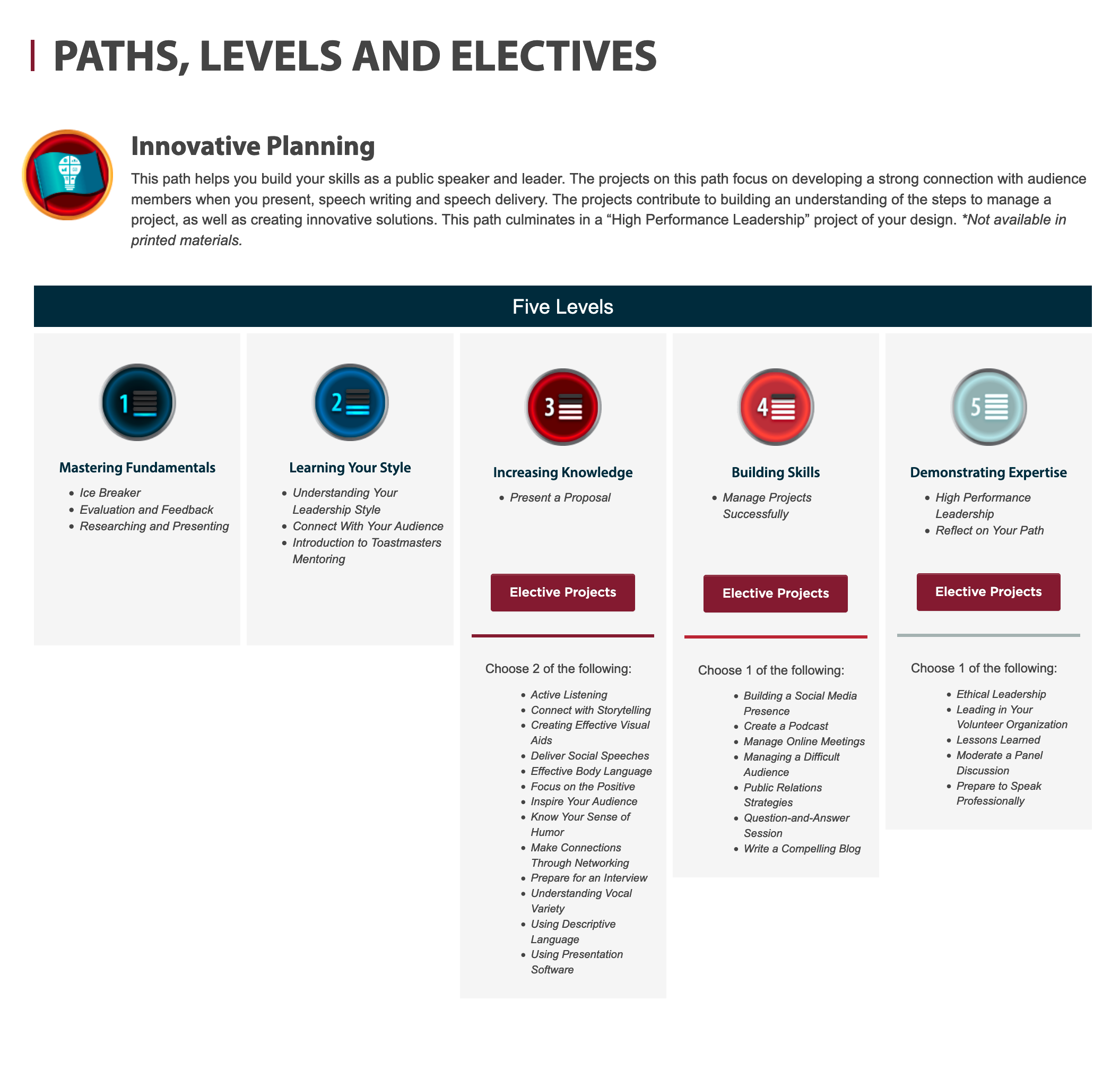
Adapted from https://www.toastmasters.org/pathways-overview/pathways-innovative-planning-path, retrieved November 9, 2019.
Addendum 2: Worldwide Cybernetics Conferences
World Multi-Conference on Society, Cybernetics and Informatics
Orlando, Florida, United States
July 12-15 2020
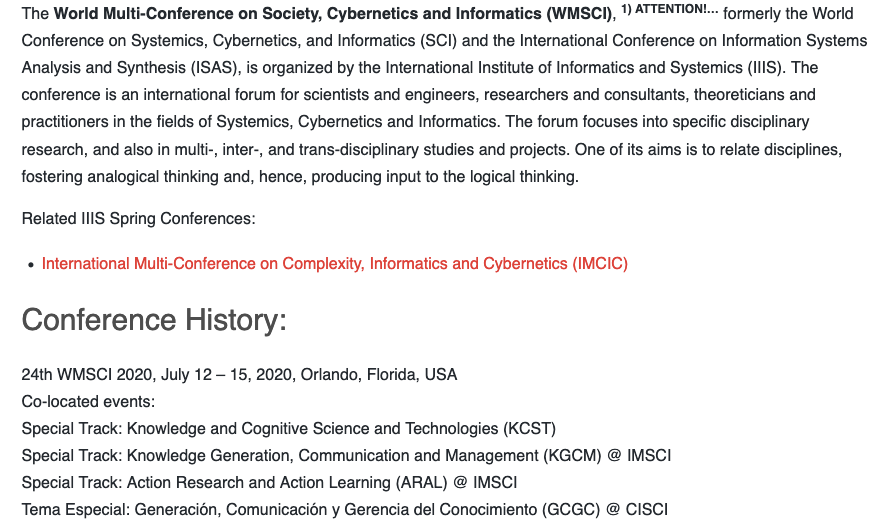
Adapted from https://kmeducationhub.de/world-multi-conference-on-systemics-cybernetics-and-informatics-wmsci/ retrieved November 13, 2019.
World Organisation of Systems and Cybernetics 18th Conference
Moscow, Russia
September 16-18 2020
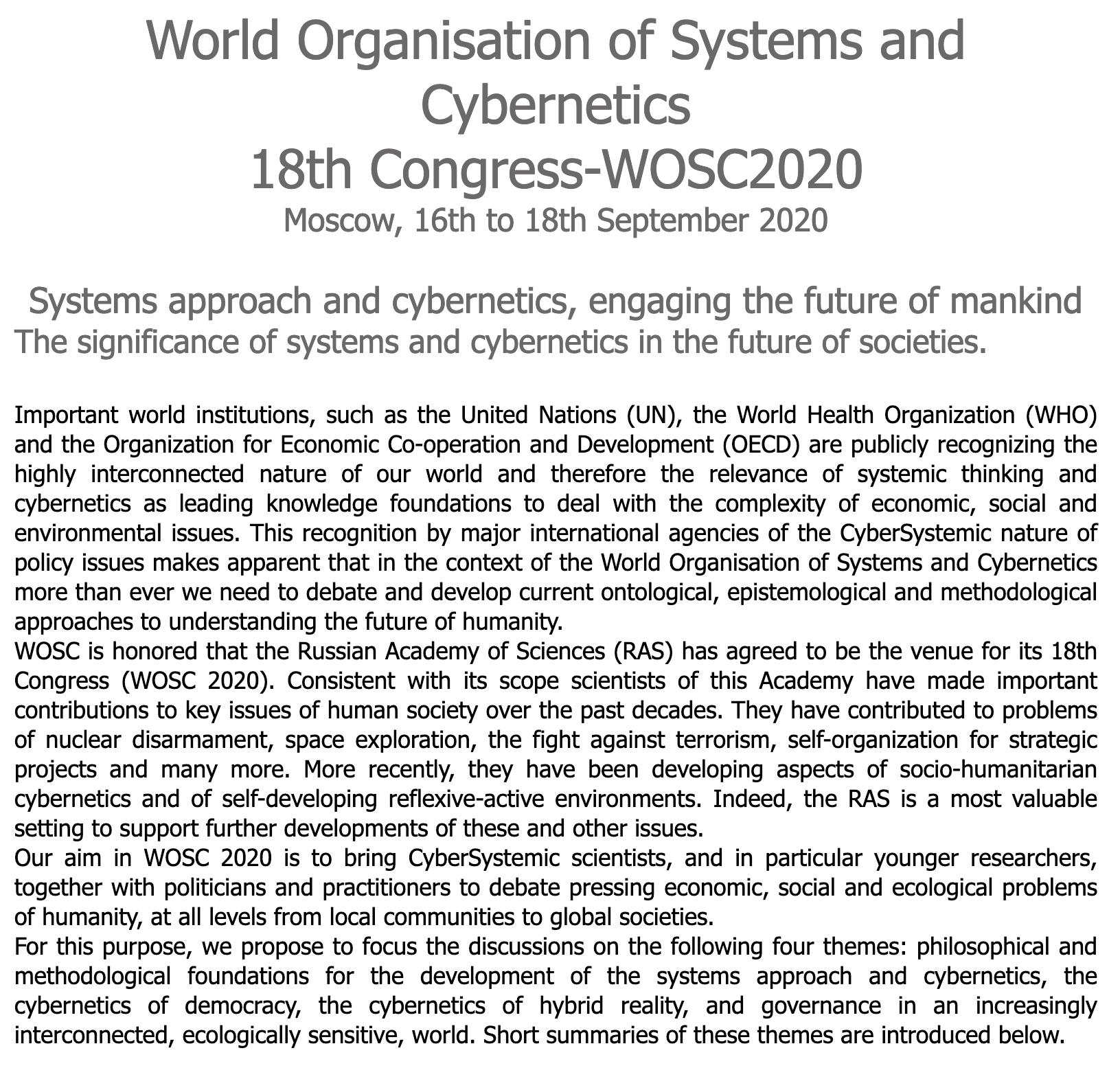
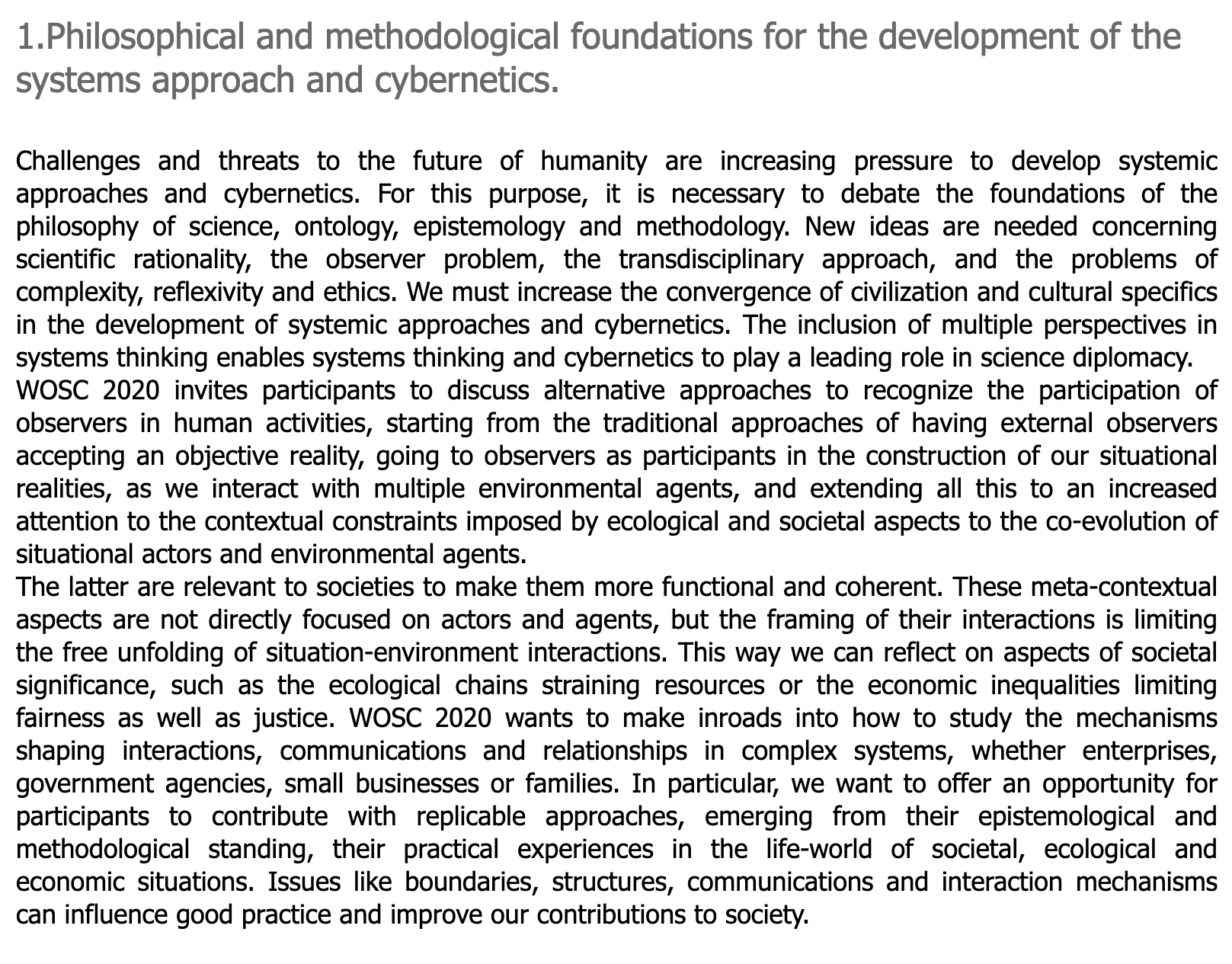
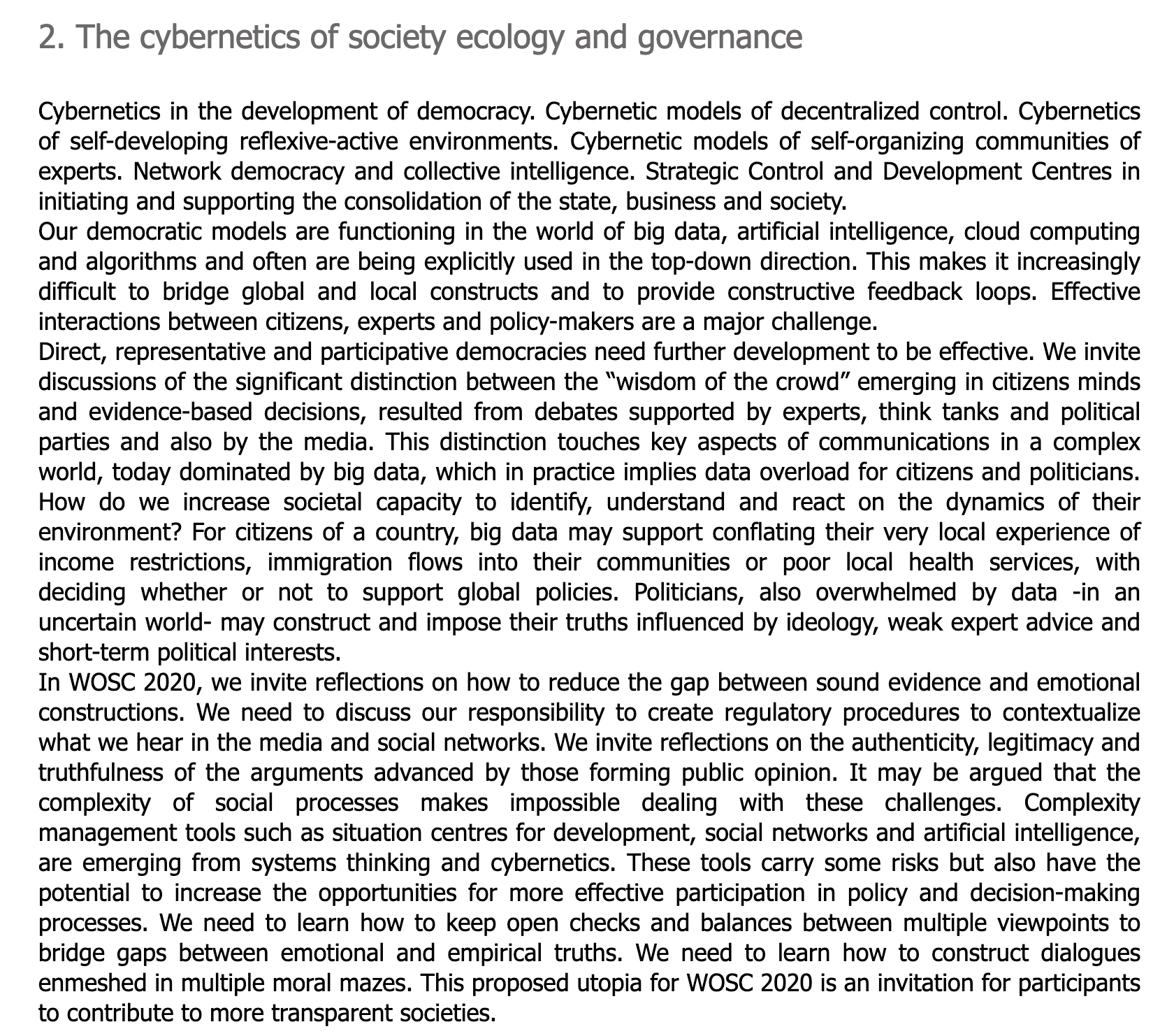
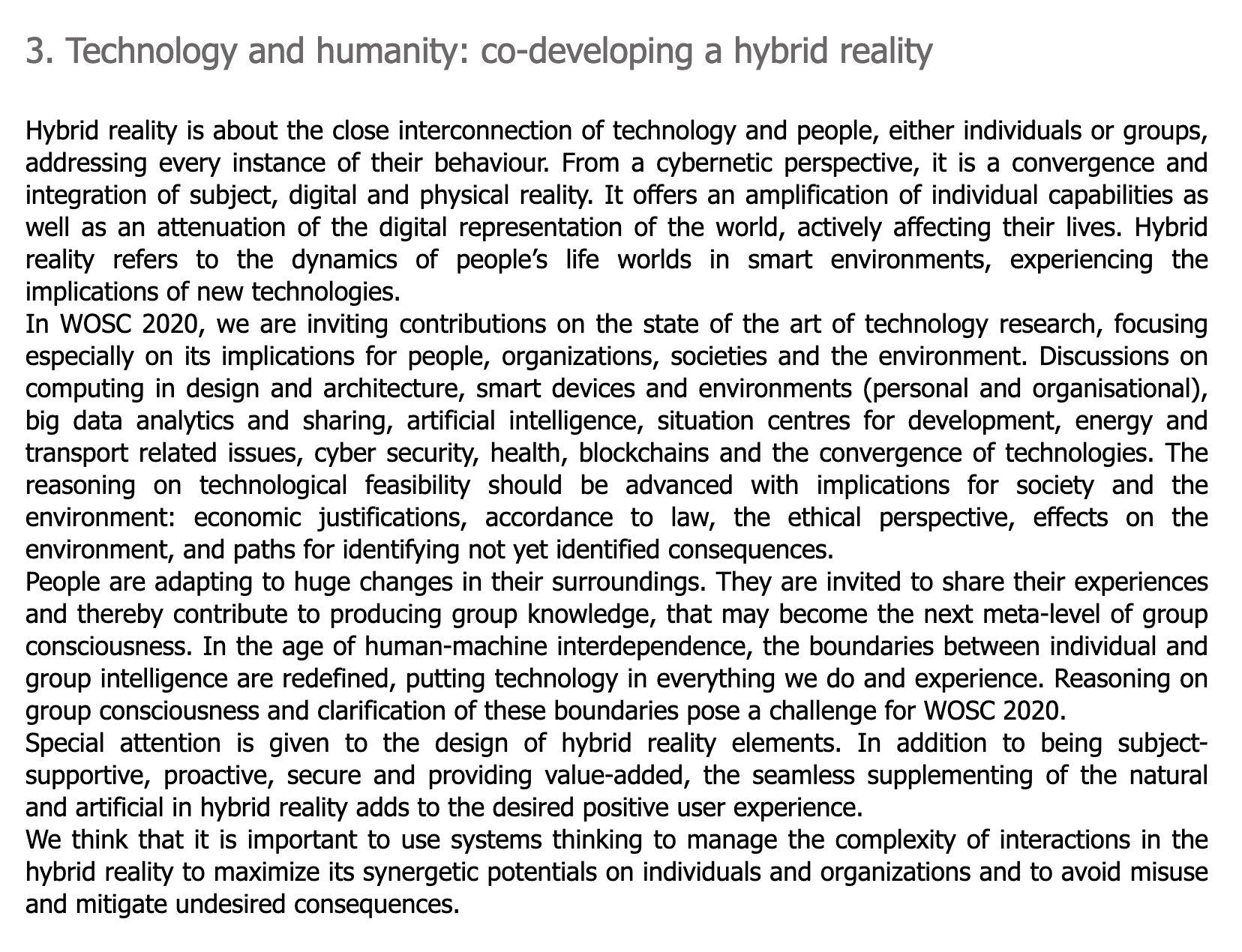
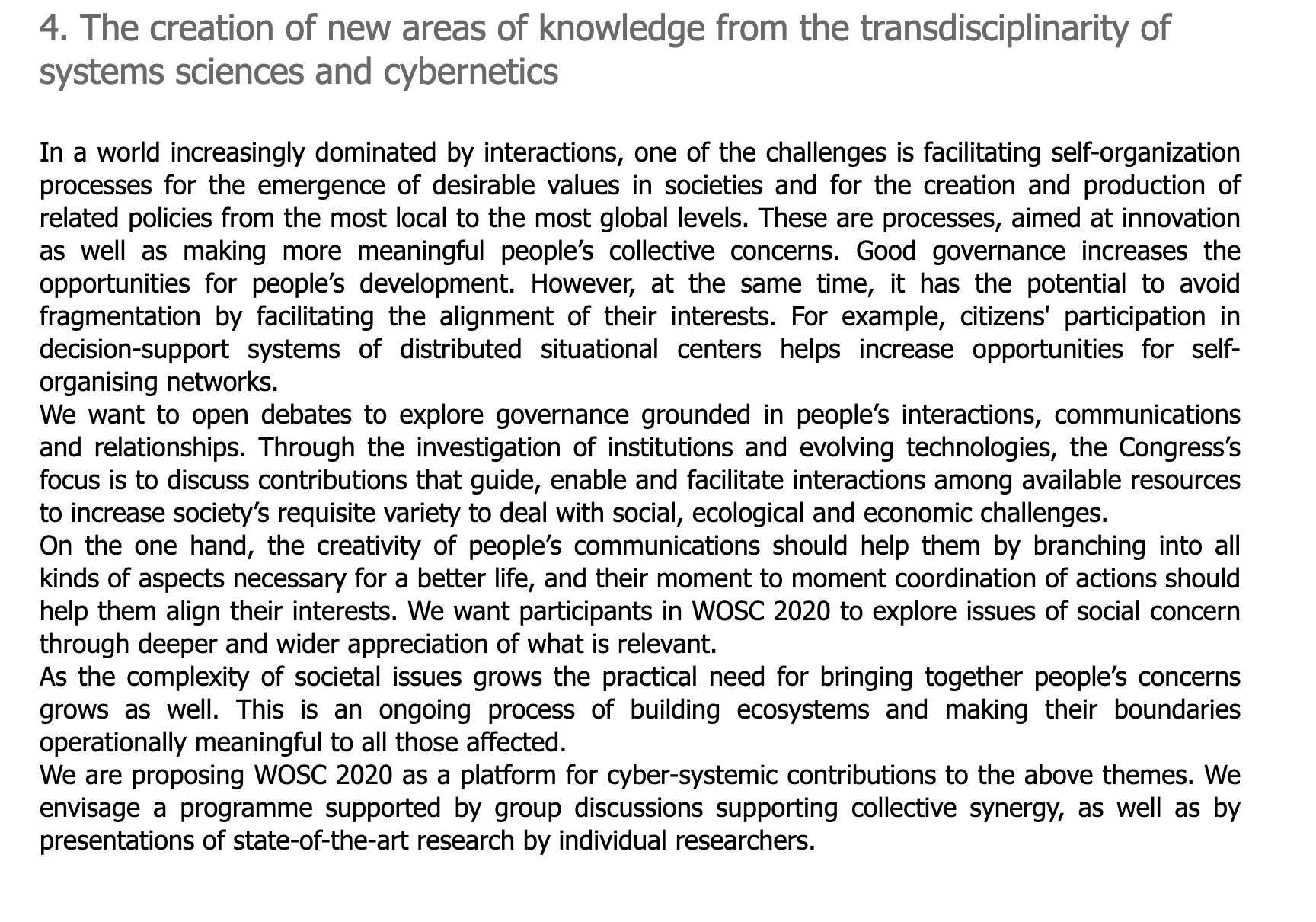
Adapted from https://www.wosc2020.org/a-manifesto; retrieved November 13, 2019.
Annual Conference of the American Society for Cybernetics
TBD; TBD 2020

Adapted from http://asc-cybernetics.org/past-events/; retrieved November 13, 2019.
Metaphorum
TBD; TBD
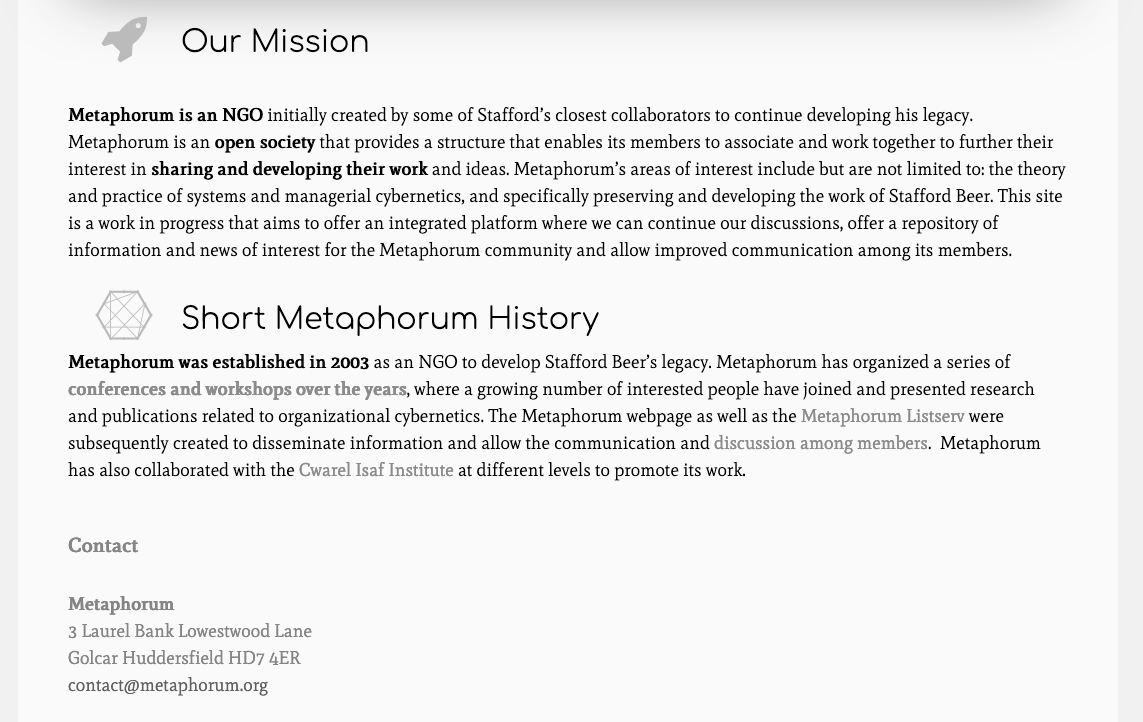
Adapted from http://asc-cybernetics.org/past-events/; retrieved November 13, 2019.
Addendum 3: SFPC
SFPC Mission

Adapted from https://sfpc.io/mission/, retrieved November 13, 2019.
Examples of SFPC Programs
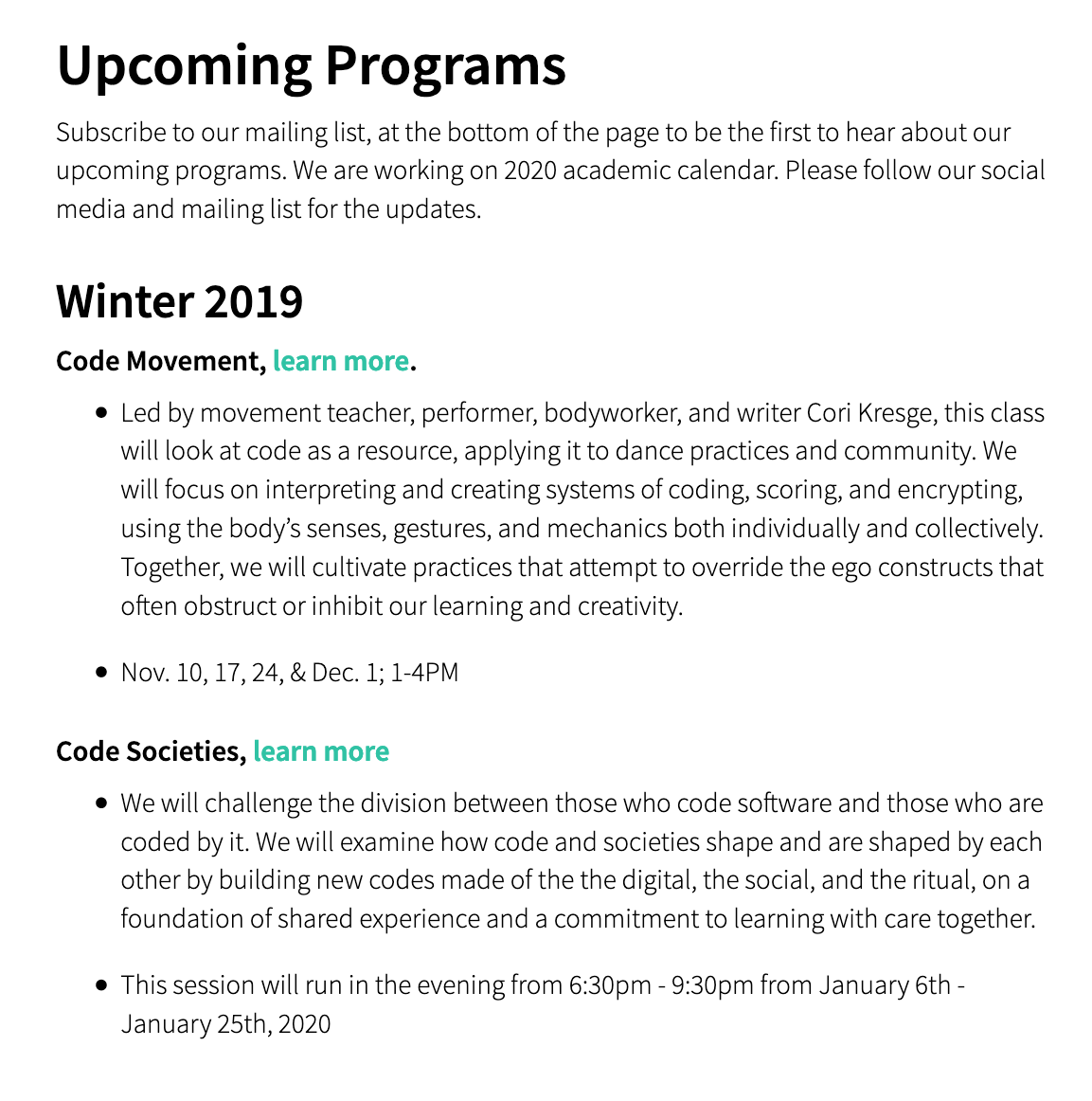
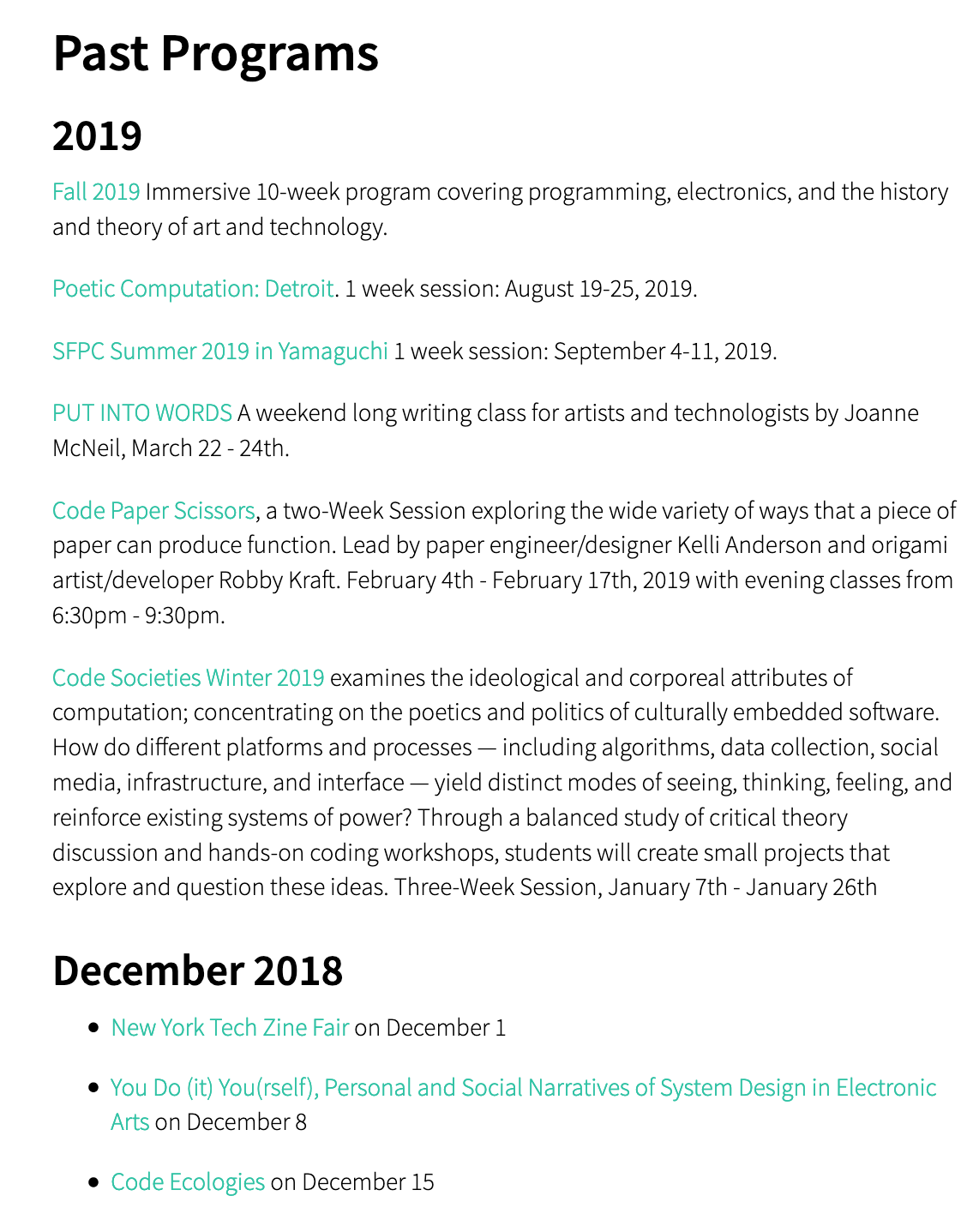

Adapted from https://sfpc.io/participate/, retrieved November 13, 2019.